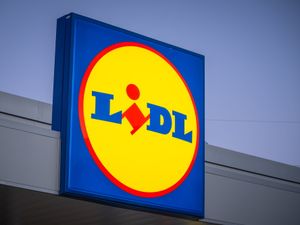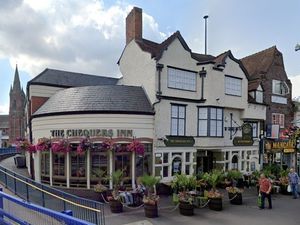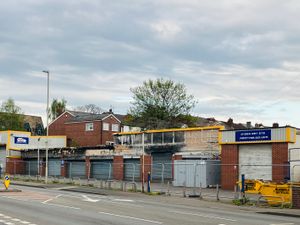Humble beginnings of a banking empire
Lloyds TSB is now one of the world's largest banks - but it started off right here in the Black Country in a building which is now home to a Subway sandwich shop. Mark Andrews reports.
Lloyds TSB is now one of the world's largest banks - but it started off right here in the Black Country in a building which is now home to a Subway sandwich shop. Mark Andrews reports.
It is not exactly Wall Street, but this sandwich shop in Oldbury town centre has a unique place in banking history.By the time its takeover of Halifax Bank of Scotland is complete, the Lloyds TSB group will be Britain's biggest bank, with 3,000 branches across the UK. But back in the 19th Century it had only one branch. This one.
The building which now houses the Subway snack bar in Birmingham Street, Oldbury, was the first branch of Lloyds Bank, opening for business in 1864.
Lloyds, which will have 38 million customers by the time the takeover has been finalised, was founded in the Dale End area of Birmingham in 1765, but it was nearly a century before it had a branch which customers could visit.
Originally called Taylor's and Lloyds, the bank was formed by button maker John Taylor, and iron producer Sampson Lloyd II.
Lloyd was from a Quaker family, and his father, also called Sampson, had settled in Birmingham to escape persecution in his native Wales.
At this time many Quakers were imprisoned under the Declaration of Indulgence 1672, and Sampson Snr was born in Welshpool Gaol.
The Five-Mile Act, a measure to restrict the influence of the Quakers, prevented any Non-conformist clergymen from living within five miles of a corporate borough and, like many Quakers, Sampson Lloyd decided to settle in Birmingham which had yet to gain borough status, but was emerging as a manufacturing centre.
With its headquarters in Edgbaston Street, Birmingham, Sampson Lloyd's metal business became the largest steel foundry in the British Isles, and by the time his son decided to enter the banking industry in 1765, he was already a wealthy man.
Like the new super-bank that is being created today, Lloyds was established in response to a banking crisis.
Up until 1640 the well-off would have left their deposits under Crown Protection with the Royal Mint, but after King Charles I "borrowed" £150,000 to spend on his army, merchants looked elsewhere to deposit their wealth.
By the 18th Century the modern banking system was beginning to emerge, and Quakers, who had a reputation for honesty, were well-positioned to benefit.
When Taylor's and Lloyds was formed, four shares were issued, with both men bringing their sons into the business.
Each of the partners contributed £6,000 to the business which was based at 7 Dale End.
Such was the trust between the two men that no legal deed was ever brought into place during the first 100 years of operation, although Lloyd was soon established as the dominant figure in the partnership, and the day-to-day running of the bank was left to his son Sampson Lloyd III.
At one time in its early years it was said that half of Birmingham was indebted to the firm.
The success of the bank meant that in 1742 Sampson Lloyd II was able to buy a 56-acre estate in what is now the Sparkbrook area of Birmingham for £1,290, although he continued to live in Edgbaston Street.
The large house that Lloyd had built on the Sparkbrook estate, known simply as The Farm, has recently been restored and is now open to the public.
The bank saw rapid growth under Sampson Lloyd III, and his half-brother Charles.
Interestingly, Charles had learned his trade at the rival Freame, Barclay, Freame and Co - now Barclays Bank - after his sister married Charles Barclay.
Shortly after the opening of the Oldbury branch, the business changed its name to Lloyds Banking Company, and had funds of £143,415.
A period of rapid expansion followed. The business acquired the status of a London bank, changing its name again to Lloyds Bank Ltd, and a network of branches sprang up across the West Midlands, including one in Great Bridge which opened in 1876, and another in Darlaston which opened in April, 1886.
It was not until 1912 that the bank moved its headquarters to Lombard Street in London, and it was at this time, through a number of mergers and acquisitions, that the bank established branches across the country.
Another major development came in 1965, when Lloyds introduced the first computer controlled teleprocessing system in British banking, which allowed a centralised computer system to manage the books for outlying branches by a telephone connection - if you like, an early form of the internet.
In August 1995 Lloyds acquired the former Cheltenham & Gloucester Building Society, and in December the same year merged with the TSB Group to form Lloyds TSB.
The original branch in Oldbury closed around three years ago.
The Lloyd family lived in Birmingham until the 1930s, occupying a house in Hagley Road which has since been demolished to make way for an office block.
The family's last surviving daughter, Mary Eliot Walker, died in 2003.





